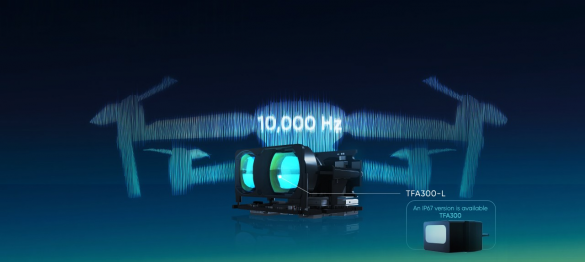In modern unmanned aerial vehicles, precision and rapid response are crucial for safe operation. Benewake provides cutting-edge solutions with their drone proximity sensor, designed to improve real-time obstacle detection. These sensors allow drones to navigate complex environments with greater reliability and efficiency. By integrating such technology, operators can reduce collision risks while maintaining high operational performance.
Ultra-High-Frequency Detection for Rapid Response
The Benewake TFA300 series offers ultra-high-frequency detection capabilities, functioning from 1 to 1,000Hz, with an adjustable mode up to 10,000Hz. This allows the drone proximity sensor to collect data 10,000 times per second, detecting obstacles at extreme speeds and providing distance updates every 3.4 cm. Such rapid sensing ensures that drones have ample time to adjust their trajectory, enhancing overall flight safety and operational precision.
Lightweight and Versatile Design
Designed with both performance and practicality in mind, Benewake engineers a lightweight form factor suitable for various UAV platforms. The compact design does not compromise sensing capability, making their drone proximity sensor a reliable choice for industrial and commercial drones that require precise obstacle avoidance. Its adaptability allows installation on a wide range of drones without affecting flight dynamics.
Conclusion: Reliable Solutions for Safer UAV Operations
By employing Benewake drone proximity sensor technology, drone operators gain access to reliable, high-speed obstacle detection systems. The combination of ultra-high-frequency data collection and lightweight design enhances UAV performance in complex environments. Drones equipped with these sensors can operate with improved safety and accuracy, supporting more efficient and secure missions. Overall, the TFA300 series represents a practical solution for those seeking dependable UAV sensing technology.
